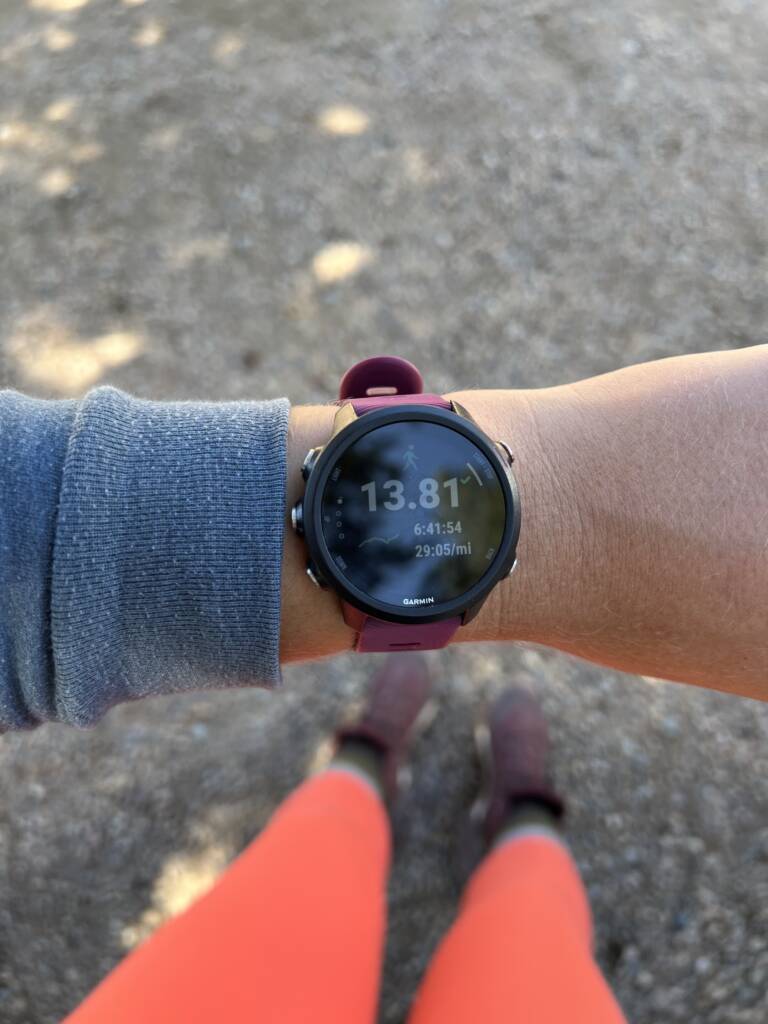Heart rate zones, endurance, aerobic activity. These are all terms that are thrown around when discussing cardiovascular health. But what do they really mean? And how do they affect your training progress?
Each of these concepts plays a critical role in understanding how your body performs during exercise and how you can train more efficiently. By understanding and applying these concepts to your training, you can better track your progress, avoid overtraining, and optimize your workouts to see real improvements over time.

Endurance vs. Aerobic Exercise
Endurance refers to your body’s ability to sustain prolonged physical activity. Long distance hiking, running, biking and swimming are all commonly thought of as endurance exercises. Aerobic is the scientific term that simply means “with oxygen”. More commonly known as…cardio! Since oxygen is needed to support long distance activity, endurance exercise is also aerobic exercise. Standard weight lifting is considered anaerobic (without oxygen) due to the short bursts of exertion. However, you are able to incorporate aerobic exercise into strength training by changing up the format of the workout. Styling the workout in a circuit and HIIT format which provides limited rest time adds aerobic benefits into a strength training session.
Heart rate zones explained
Heart rate zones are based on one’s maximum heart rate. So before we jump into the five heart rate zones, we need to discuss maximum heart rate.
Just like it sounds, max heart rate is the number of beats per minute your heart can pump during strenuous activity. While there is variability, it is generally based on a simple formula.
220-current age = max heart rate
For example, I am 29. So my max heart rate is 191. So when I go full out, everything I’ve got in an activity, my heart rate would be around 190. Remember, this is maximum heart rate, so not something that is sustained on a regular basis. This number gives you a guide on where your heart rate should be for your workouts.
Zone 1 – 50-60% of max heart rate; recovery
This is a generally “easy” activity. You are not out of breath, you are able to hold a conversation. This is the zone for active recovery such as going on a walk or leisurely bike ride.
Zone 2 – 60-70% of max heart rate
In this zone you are breathing heavier, but able to still hold a conversation. Spending time in this zone allows your body to build a strong aerobic foundation for long endurance events. Generally you are able to spend 60-90 minutes completing an activity in this zone. In my opinion, zone 2 is the hardest. Keeping your heart rate at this level is more challenging than it sounds.
Sticking with my example, my zone 2 heart rate would be around 115-130. I often get too excited, head out for a run and 15 minutes in I find my heart rate has been sitting at 150. Purposely slowing down and allowing my heart rate to decrease allows me to run further and longer because my heart rate is in a sustainable zone. If you ever find yourself crashing before you hit your goal, check your heart rate. You may have pushed too hard too soon.
Zone 3 – 70-80% of max heart rate
At this point you are breathing heavier but can still talk. Generally less time per session is spent here, as it is taking more effort from your body. However in this zone is where you will find noticeable improvements in your cardiovascular and aerobic fitness. This would be the zone to complete tempo run or moderate intensity cardio sessions.
Zone 4 – 80-90% of max heart rate
This zone is hard and unable to be sustained for long periods of time. You can physically feel your heart beating and you are out of breath. An example of zone 4 cardio would be interval training.
Zone 5 – 90-100% of max heart rate
This is right at your max heart rate. In this zone you are working on explosive movements that are fast and powerful. Generally you don’t spend more than 60 seconds in this zone at a time.
Why Do Heart Rate Zones Matter?
Different zones cause the body to react differently. Time spent in zone 2 helps build endurance, while time spent in zone 4-5 builds power and speed.
Time spent in each zone is very specific to what your goals are. An endurance athlete spends more time in zone 2, whereas a powerlifter or sprinter spends more time in zones 4-5.
A common misconception is that the harder the workout feels, the more effective it is. Which is not accurate. A workout in zone 2 can feel “easy” and still be very effective. Spending too much time in zones 3–4 can be physically demanding and may lead to burnout over time. When you’re constantly training at a higher intensity without adequate recovery, it often feels like you’re working hard but not making much progress.
That’s why it’s essential to balance those tougher workouts with time in zones 1–2. Lower-intensity sessions give your body a chance to recover and help prevent overtraining. They also provide a mental break, so you’re not pushing yourself to the limit every single day. Working with a coach can help you tailor your workouts so you know you are spending time in the most effective zone for your goals.
Heart Rate Zones in Mountain Athletes
Heart rate zones aren’t any different for mountain athletes than they are for any other athlete. However, the application of these workouts can differ. Altitude and terrain variability are two characteristics specific to mount athletes that other athletes may not account for.

Altitude
Being at a higher altitude can increase the heart rate just at baseline. You may go on a 5 mile run in Madison and can easily stay in zone 2. But if you go on the same run but now add a 3,000 feet elevation, you may automatically go into zone 3 or 4. There is nothing you are doing wrong nor has your performance declined.
Simply being at a higher elevation demands an increase in oxygen from the body. Due to this, your heart beats faster to deliver said oxygen even without the addition of any physical activity. This is when it is important to be mindful of your heart rate and intentional about what you are doing for training and what you want to accomplish.
Terrain Variability
The terrain in the mountains is completely different from what you’d find in Wisconsin. They are much more varied and demanding. On a mountain hike, my heart rate often shifts between zones 2 and 4 depending on how challenging each section is. Some hikes even push me through all five zones at different points. That unpredictability is one of my favorite parts of hiking in the mountains. I never know what’s coming next, but I trust my ability to handle it because I’ve trained intentionally using heart rate zones.


